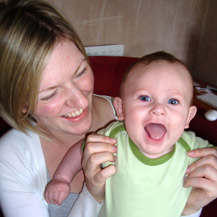Ovulation and Technology
In a world that is persistently developing and improving its technology, it is exciting to see ways in which the medical sphere is too evolving. This is especially true with regards to those who are trying to get pregnant and are considering for more effective and accurate ways to conceive. Looking at different apps and methods, we will discuss the impact of technology on ovulation, while also examining the most successful methods.
For couples that want to start a family, or those that simply want to continue growing theirs, tracking fertility is a great way to start. Through technology, predicting ovulation and understanding fertility has been brought into the 21st century with the mass production of innovative fertility tracker apps. The most fertile days for women are considered to be around days 12, 13, and 14 of a typical 28-day cycle. Although undoubtedly this varies among women, many fertility apps are able to identify the most fertile days through ovulation tracking.
Also, before planning a pregnancy, the couple should be aware that the women should not have any vaginal infections and should take every precaution to avoid this. Women, for example, may use cotton pads during their periods. Websites such as Lady Anion, which are said to have the best sanitary pads in Australia, can be a good starting point to start if you’re looking to buy cotton pads or panty liners online. Or, if you live in Australia, you could solely do a Google search for “sanitary pads australia.”
Other than that, ultrasound can be utilized not just during pregnancy, but also pre-conception too! It is an amazing alternative to manually charting menstrual cycles on calendars or working them out through calculators. It is essentially a ‘snap-shot’ of a point in time of the female cycle and can determine whether ovulation is close by measuring the size of ovaries. Whilst an innovative way to predict ovulation, it requires great timing to ensure the best information, as well as costly both in terms of time and money.
A great alternative that modern technology provides to fertility apps on smart phones or devices alike, is that of an advanced fertility monitor. Using core temperatures these devices offer an effective alternative to the more basic and often inaccurate format of applications. Fertility monitors are a great tool to use to not only assist with conception, but to help understand how the female body works.
Technology has also been able to identify issues relating to fertility, as well as providing methods for the charting or prediction of it. Polycystic Ovary Syndrome (PCOS) is an unfortunately common condition amongst women that effects the fertility of women through the production of irregular periods. While there are often unpleasant symptoms, such as acne or hair loss and weight gain, PCOS is treatable through surgery, with medications available to tackle the individual symptoms. For the cases whereby assistance is needed for conception, technology provides the method of IVF; a well-known and effective solution, while unfortunately rather expensive.


